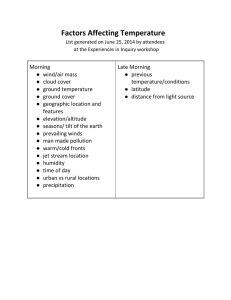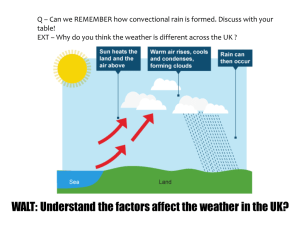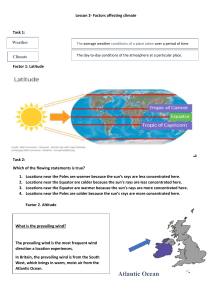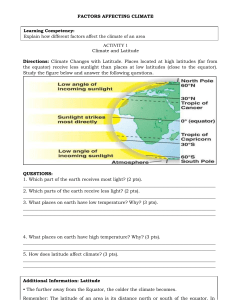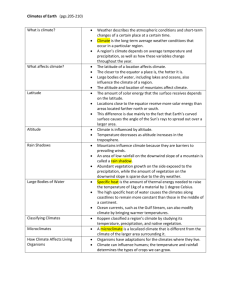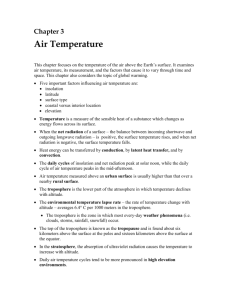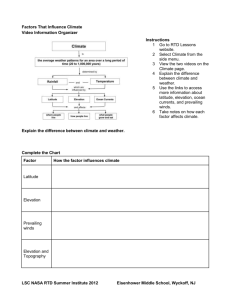File
advertisement
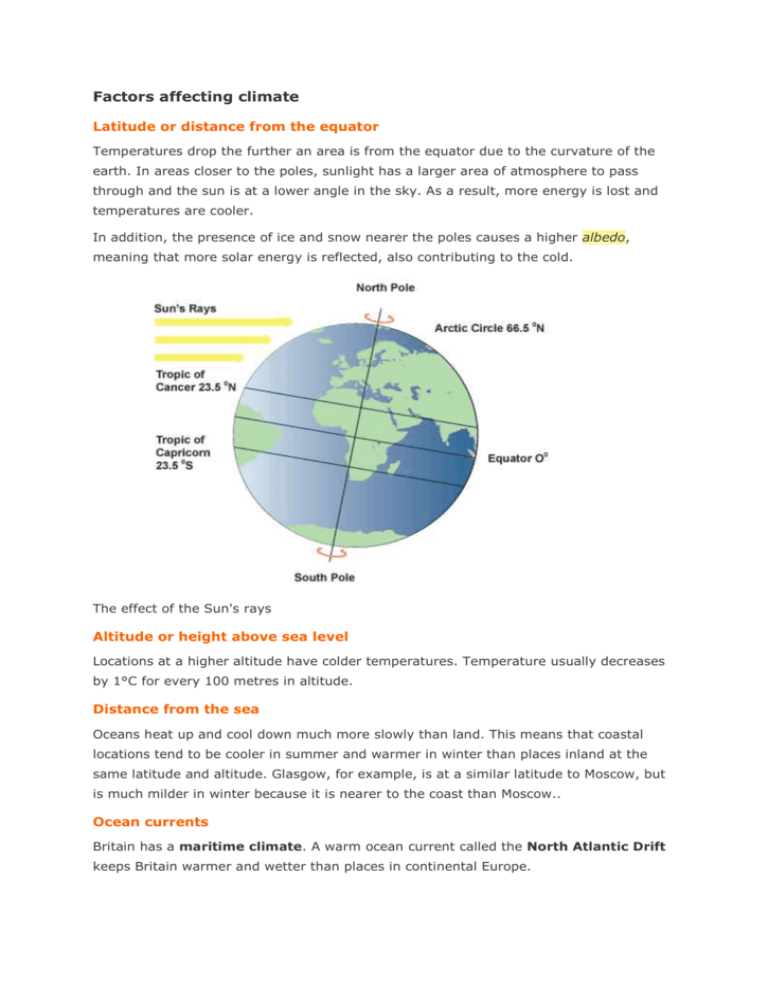
Factors affecting climate Latitude or distance from the equator Temperatures drop the further an area is from the equator due to the curvature of the earth. In areas closer to the poles, sunlight has a larger area of atmosphere to pass through and the sun is at a lower angle in the sky. As a result, more energy is lost and temperatures are cooler. In addition, the presence of ice and snow nearer the poles causes a higher albedo, meaning that more solar energy is reflected, also contributing to the cold. The effect of the Sun's rays Altitude or height above sea level Locations at a higher altitude have colder temperatures. Temperature usually decreases by 1°C for every 100 metres in altitude. Distance from the sea Oceans heat up and cool down much more slowly than land. This means that coastal locations tend to be cooler in summer and warmer in winter than places inland at the same latitude and altitude. Glasgow, for example, is at a similar latitude to Moscow, but is much milder in winter because it is nearer to the coast than Moscow.. Ocean currents Britain has a maritime climate. A warm ocean current called the North Atlantic Drift keeps Britain warmer and wetter than places in continental Europe. The North Atlantic Drift Prevailing wind The prevailing wind is the most frequent wind direction a location experiences. In Britain the prevailing wind is from the south west, which brings warm, moist air from the Atlantic Ocean. This contributes to the frequent rainfall. When prevailing winds blow over land areas, it can contribute to creating desert climates.
